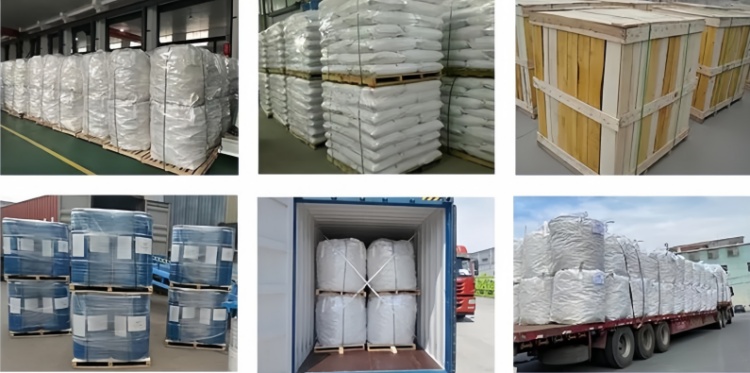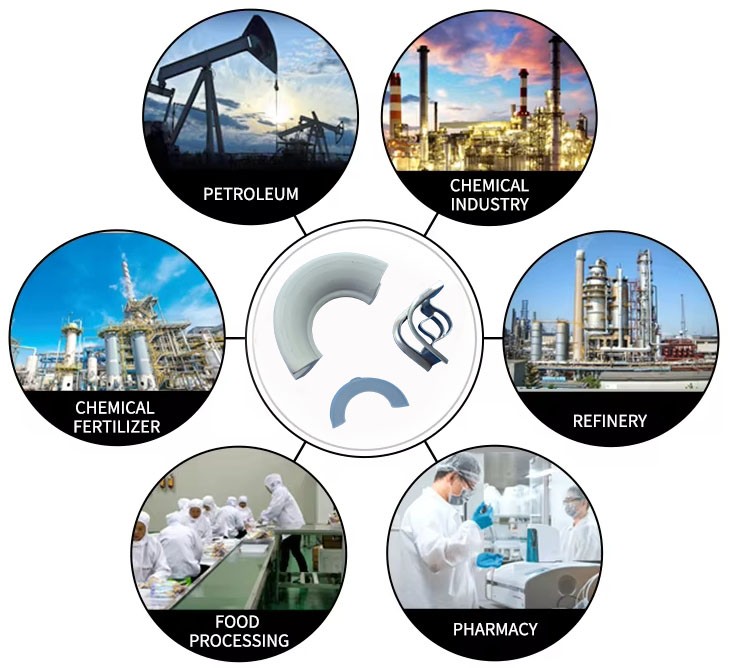In industrial processes involving mass transfer operations such as distillation, absorption, and stripping, the efficiency and performance of tower packing are crucial to achieving optimal results. Intalox saddle packings, a widely recognized type of random tower packing, play a significant role in enhancing these processes. This article provides an in-depth discussion of the characteristics, applications, and performance of Intalox saddles in various industrial applications.
What is Intalox Saddles Tower Packing
The Intalox Saddle Tower Packing combines the structural advantages of both ring and saddle packings. Its unique design enhances liquid distribution and increases the number of gas flow paths, resulting in reduced resistance, higher flow rates, and improved efficiency compared to Pall Rings.
As a third-generation innovation, the Intalox Saddle Packing is a modern improvement of the 1950s berl saddles. Developed from the ceramic arc saddle, its shape features different interior radii of curvature on both arched surfaces, solving the problem of nesting. This optimized structure ensures even porosity distribution, leading to better fluid distribution, greater capacity, and lower pressure drop than traditional raschig rings packing.
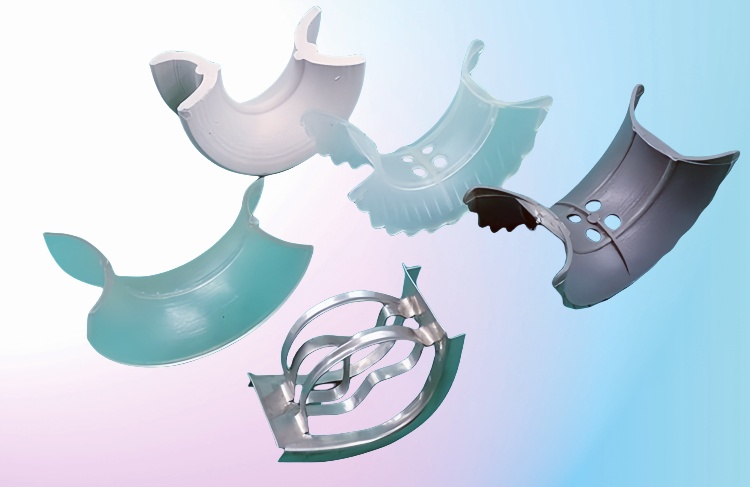
Characteristics of Intalox Saddles Tower Packing
Intalox saddles are innovative packing elements designed to optimize gas-liquid and liquid-liquid contact processes in tower packing. Their unique shape and structure offer numerous advantages, improving efficiency and performance across a wide range of industrial applications.
1. Design and Structure
Intalox saddles combine the strengths of both ring-shaped and saddle-shaped packings. Their curved, open structure minimizes fluid resistance, reducing the pressure drop across the packed bed. This design allows for improved distribution of liquid and gas phases, preventing channeling or preferential flow paths. The combination of concave and convex surfaces provides a balance between surface area and void space, resulting in enhanced mass transfer efficiency and higher overall performance.
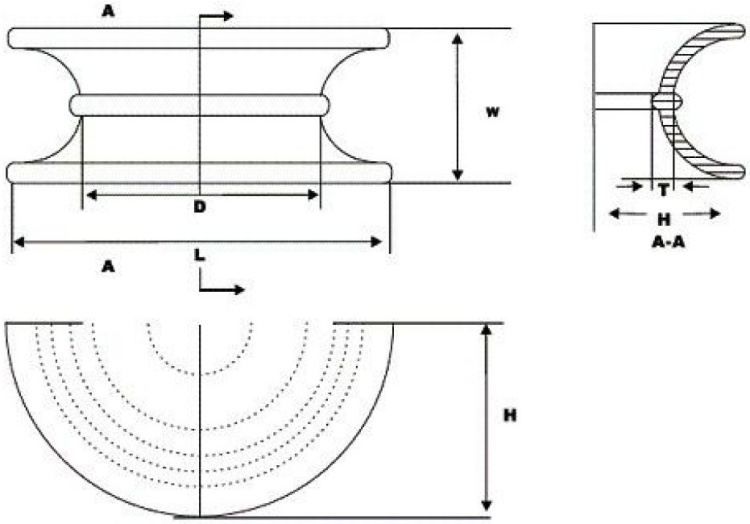
2. Materials of Construction
Intalox saddles come in various materials, each suited for specific operational needs:
ceramic intalox saddles
Ceramic is a popular material for Intalox saddles, particularly in environments that require excellent resistance to corrosion and high temperatures. Ceramic Intalox saddles are commonly employed in acid gas absorption and other processes involving highly corrosive chemicals, as they remain stable even under severe chemical attacks. In addition to their corrosion resistance, ceramic Intalox saddles can endure high-temperature applications, making them suitable for industries like chemical processing, petrochemical plants, and environmental engineering.
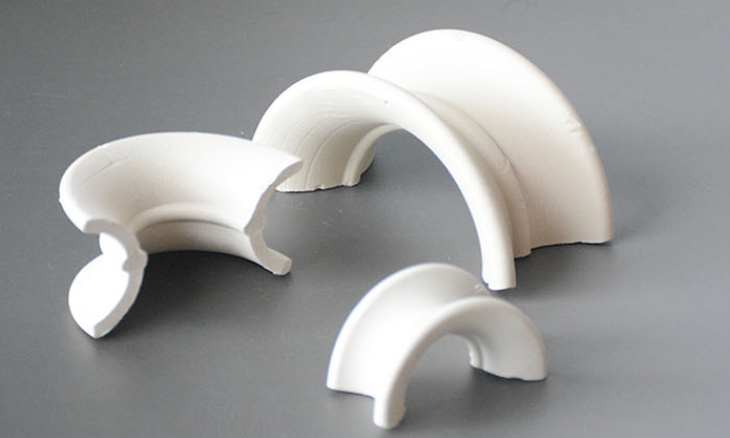
Plastic Intalox Saddles
Plastic Intalox saddle packings offer a lightweight and corrosion-resistant alternative, ideal for applications where handling weak acids, alkaline solutions, or the need to minimize weight is critical. Plastics like polypropylene (PP), high-density polyethylene (HDPE), reinforced polypropylene (RPP), and polyvinylidene fluoride (PVDF) are commonly used for these types of Intalox saddles, each selected based on the specific operational environment.
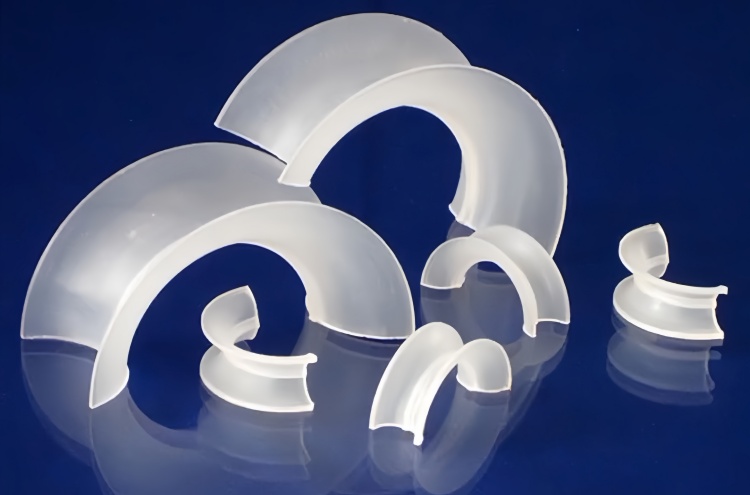
One of the key advantages of plastic Intalox saddles is their high void ratio, which can reach up to 95%. This high void ratio allows for efficient vapor flow through the packing, improving the overall system performance by minimizing pressure drop while maximizing vapor-liquid contact. The lightweight nature of plastic materials also facilitates easier handling and installation, reducing operational costs in large-scale operations. plastic saddles are particularly suited for applications with moderate chemical exposure and where high mechanical strength is not the primary concern, such as water treatment plants, low-temperature absorption towers, and distillation processes involving weak chemicals.
Additionally, plastics like PVDF offer excellent chemical resistance to strong acids, oxidizing agents, and solvents, making them an ideal choice for processes involving aggressive media, while materials like HDPE and PP are better suited for less aggressive conditions but with a focus on economic and operational efficiency.
Metal Intalox Saddles
metal intalox saddles are used in applications where high mechanical strength, temperature resistance, and thermal conductivity are required. Typically constructed from metals like stainless steel (grades 304, 321, and 316L) or carbon steel, these saddles are ideal for processes involving high temperatures, high pressures, and mechanical stress. Stainless steel Intalox saddles are particularly valuable in applications requiring both corrosion resistance and strength, such as in refineries, petrochemical plants, and offshore gas processing units.
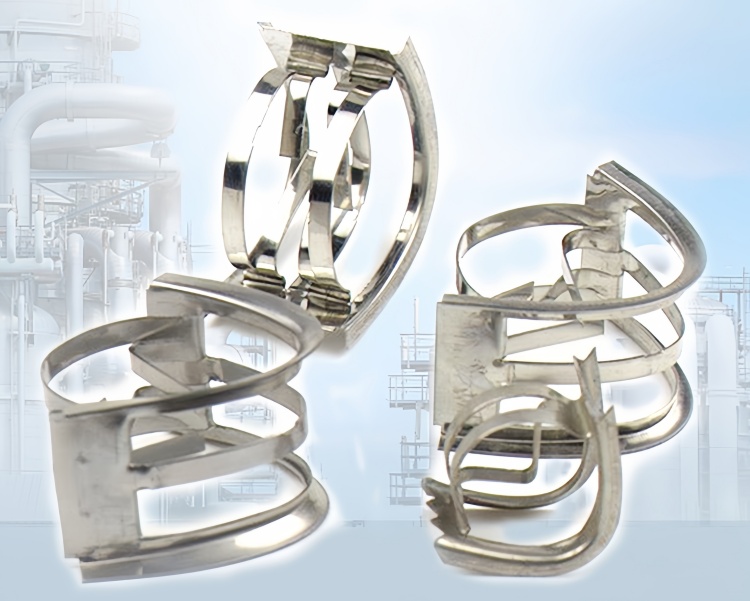
Stainless steel 316L, for example, offers enhanced resistance to chloride environments and is widely used in industries handling corrosive fluids like seawater or chemicals with high chloride content. Meanwhile, 304 stainless steel provides good corrosion resistance for general applications where exposure to aggressive chemicals is less intense but where mechanical strength is still necessary.
Metal Intalox saddles also exhibit excellent thermal conductivity, which helps in processes where efficient heat transfer is essential, such as distillation, heat recovery systems, and chemical reactors. Additionally, the robustness of metal ensures longevity in high-stress environments, reducing the need for frequent replacements and maintenance.
In some cases, carbon steel may be chosen for cost-sensitive projects, where corrosion resistance is not a primary concern, but the need for high mechanical strength and the ability to withstand pressure is crucial.
3. Performance Benefits
- High Void Ratio: Plastic Intalox saddles, particularly from MACH Engineering, offer a high void ratio of up to 95%. This increased void space between packing elements allows vapor to pass more quickly through the tower, improving overall process efficiency.
- Efficient Mass Transfer: The design of plastic Intalox saddles ensures efficient mass transfer due to low liquid residence time and increased surface area. This enhances gas-liquid contact and maximizes the effectiveness of separation processes.
- Uniform Contact Between Gas and Liquid: The scalloped edges of plastic Intalox saddles prevent settling, promoting uniform surface area and consistent contact between the gas and liquid phases. This even distribution helps maximize the tower’s capacity and productivity.
- Low Pressure Drop: The corrugated outer edge of plastic Intalox saddles allows fluid to pass freely through the tower, contributing to a low pressure drop. This feature improves chemical separation efficiency, making the process more effective and energy-efficient.
Specifications of Intalox Saddles Tower Packing
1. Metal intalox saddles Packing ( IMTP ) specification
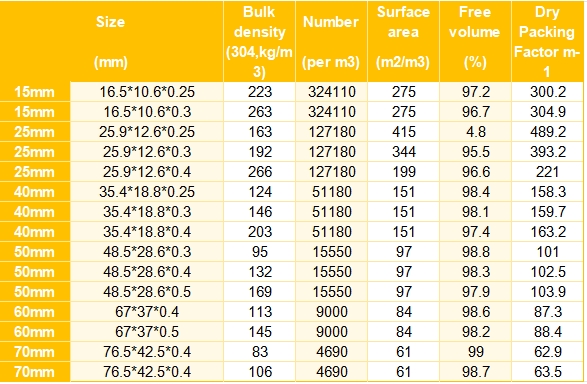
2. Ceramic intalox saddles specification
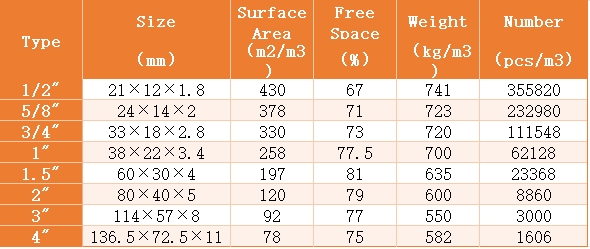
3. Plastic intalox saddles specification

Applications of Intalox Saddles in Industrial Processes
Intalox saddles are widely used in various industrial processes due to their efficient gas-liquid contact, low pressure drop, and versatility in different environments. These packing elements provide enhanced mass transfer efficiency, making them ideal for use in distillation, absorption, stripping, and liquid-liquid extraction, among other processes. Below are key applications where Intalox saddles are utilized:
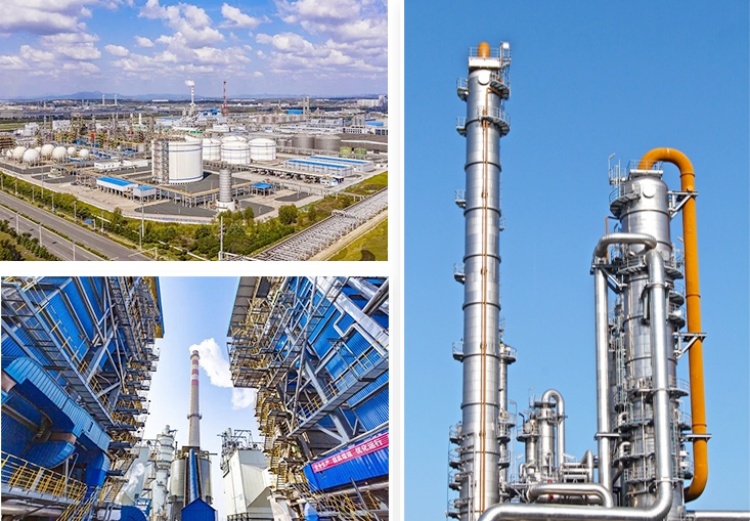
1. Distillation
Distillation is one of the most common uses for Intalox saddles. These packings promote efficient vapor-liquid contact, crucial for separating components based on their volatility. Their design minimizes pressure drop, making them ideal for use in the rectification section of distillation columns where maximizing separation efficiency is essential.
2. Absorption
In gas absorption processes, Intalox saddles ensure high mass transfer efficiency by enhancing contact between gas and liquid phases. This makes them particularly effective in removing acid gases like CO₂ or H₂S from natural gas streams and scrubbing pollutants from industrial exhaust gases. Ceramic Intalox saddles are preferred in acid gas absorption due to their excellent corrosion resistance, ensuring durability and prolonged service life.
3. Stripping
Intalox saddles are also effective in stripping processes, which involve removing volatile components from liquids by introducing a stripping gas. Their open structure enhances the interaction between liquid and gas phases, boosting stripping efficiency. Common applications include the removal of volatile organic compounds (VOCs) or ammonia from wastewater in water treatment facilities.
4. Liquid-Liquid Extraction
In liquid-liquid extraction, Intalox saddles provide the surface area and distribution characteristics required to facilitate the transfer of solutes between immiscible liquid phases. Their design ensures uniform dispersion of the liquids, maximizing contact time and improving extraction efficiency. These packings are widely used in industries where separating compounds from different liquid phases is critical.
5. Environmental Engineering
Intalox saddles play a significant role in environmental applications, such as wastewater treatment and the scrubbing of hazardous gases from industrial emissions. Their ability to handle corrosive chemicals and varying flow rates makes them ideal for processes like biofiltration and gas scrubbing.
6. Desulfurization and Decarbonization
Intalox saddles are crucial in desulfurization and decarbonization processes. Desulfurization, especially in fuels like natural gas, helps minimize corrosion by reducing sulfur levels, while decarbonization decreases the carbon content in metals. Both processes involve the separation of gases from liquids, where plastic super saddles excel due to their efficiency in promoting gas-liquid contact and resistance to harsh chemicals.
7. Chemical Processing Industry
Intalox saddles, particularly plastic Super Saddles, are widely used in the chemical processing industry. In sulfuric acid production—essential in fertilizer manufacturing, chemical synthesis, and mineral processing—plastic Super Saddles play a key role by facilitating gas-liquid separation in processes that require high durability and resistance to chemicals.
8. Pulp and Paper Industry
The pulp and paper industry relies on Intalox saddles for the separation of color-causing fibers like lignin in bleach plant absorbers. The chemical process used in these plants involves separating liquids and gases, a task that plastic Super Saddles handle efficiently.
9. Crude Oil Industry
In crude oil processing, plastic Super Saddles are frequently used to separate liquids and particulates from crude oil. These packings effectively improve the separation efficiency and are an essential component in refining processes where high-capacity and reliable separation are necessary.
10. Liquid Separation Processes
Plastic Super Saddles are commonly used in various liquid separation processes, including drying, scrubbing, and stripping towers. They provide high performance in applications requiring mass transfer and efficient fluid interaction.
11. General Absorption, Extraction, and Heat Transfer
Beyond the specific processes mentioned, plastic Super Saddles are widely used in various applications that require absorption, extraction, or heat transfer. Their versatility, combined with efficient gas-liquid contact and low pressure drop, makes them suitable for a broad range of industrial uses.
Performance Characteristics of Intalox Saddles in Tower Packing
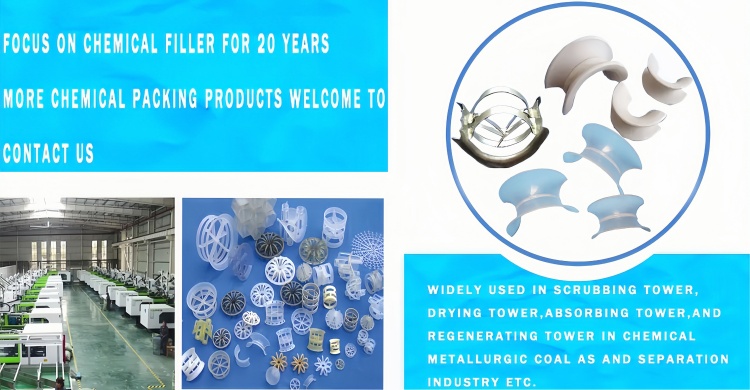
1. Pressure Drop
A low-pressure drop is essential in packed columns to optimize energy consumption and operational efficiency. The open structure of Intalox Saddles minimizes flow resistance, enabling smooth fluid passage and reducing the overall pressure drop. This feature is especially beneficial in high-capacity applications, where maintaining a low-pressure drop can significantly improve energy efficiency by reducing the power needed to move fluids through the column. Compared to traditional packing like Raschig rings or Berl saddles, Intalox Saddles consistently offer lower pressure drops at comparable loading rates.
2. Mass Transfer Efficiency
Mass transfer efficiency is a critical parameter that defines the separation process's effectiveness. The unique saddle shape of Intalox packings ensures better distribution of gas and liquid throughout the packing, increasing the available surface area for mass transfer between the phases. This increased interaction between gas and liquid results in superior separation efficiencies, particularly in applications where high purity or selective separation is required. The improved surface area and flow dynamics enhance the overall performance, making Intalox Saddles an excellent choice for achieving optimal mass transfer rates.
3. Liquid Distribution and Wettability
Proper liquid distribution and wettability are key to achieving uniform mass transfer. The shape of Intalox Saddles promotes even liquid distribution, allowing the liquid phase to spread effectively across the packing surface. This minimizes the formation of dry spots, which can hinder mass transfer, and ensures more consistent gas-liquid interaction. The design also enhances wettability, facilitating better surface contact between the liquid and packing material, leading to increased efficiency in gas-liquid mass transfer processes.
4. Capacity
Intalox Saddles are designed to handle relatively high capacities of both liquid and gas flows, making them suitable for high-throughput applications. The combination of low pressure drop and high surface area allows them to maintain efficient separation processes even under heavy loads. This capacity to handle large volumes without a significant increase in pressure drop or decrease in mass transfer efficiency makes them a preferred packing material in large-scale industrial processes like distillation and gas absorption.
5. Fouling Resistance
Fouling, the accumulation of unwanted material on the packing surface, can negatively impact performance in packed towers. The design of Intalox Saddles helps mitigate this problem by reducing the areas where solids or liquids might accumulate. This resistance to fouling ensures that the packing remains efficient over longer operational periods, reducing maintenance frequency and preserving the column's performance in environments prone to fouling.
6. Liquid Holdup
Liquid holdup refers to the volume of liquid retained within the packing material. While some liquid holdup is necessary for efficient mass transfer, excessive retention can lead to problems like flooding, which reduces the gas phase's ability to flow through the column. Intalox Saddles strike an effective balance, providing enough liquid holdup to enhance mass transfer rates without causing excessive buildup or flow restrictions. This controlled holdup contributes to stable operation, particularly in high-flow processes.
7. Mechanical Strength and Durability
The mechanical strength of Intalox Saddles depends on the material from which they are constructed, each offering distinct advantages:
- Metal Intalox Saddles: These offer superior mechanical strength and resistance to deformation under high loads. They are suitable for large-scale industrial applications where mechanical stresses are high.
- Ceramic Intalox Saddles: Although ceramic is more brittle than metal, it provides excellent corrosion resistance, making ceramic saddles ideal for harsh chemical environments.
- Plastic Intalox Saddles: Lightweight and resistant to chemical attack, plastic saddles are easier to handle and install. They offer a balance of corrosion resistance and flexibility, suitable for moderate operating conditions where weight and ease of installation are important factors.
Comparative Analysis: Intalox Saddles vs. Other Random Packings
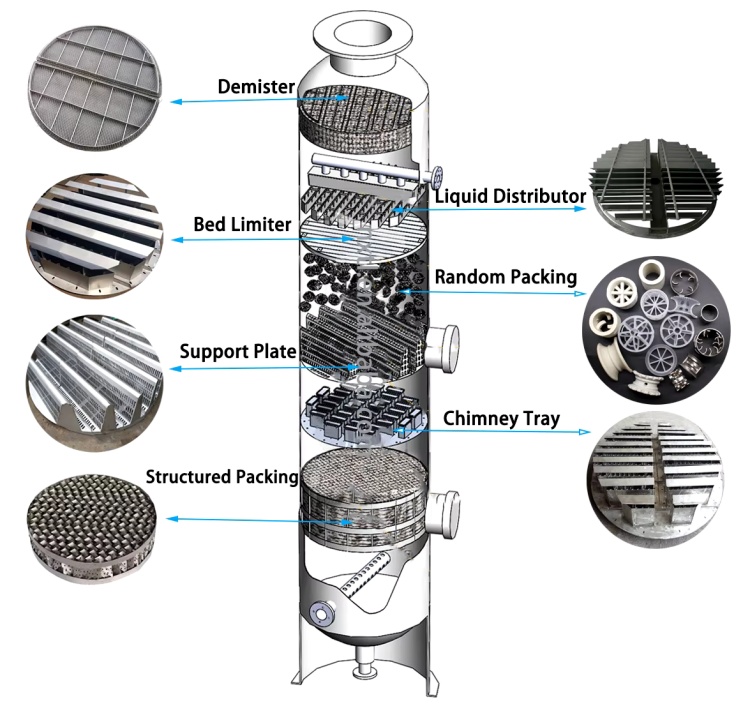
When compared to other random packing types, such as Raschig rings or Pall rings, Intalox saddles demonstrate several performance advantages:
- Higher Mass Transfer Efficiency: The unique saddle design provides a larger surface area and better fluid distribution compared to simpler geometries like Raschig rings.
- Lower Pressure Drop: The open structure of Intalox saddles reduces pressure drop more effectively than Pall rings, which have more flow resistance due to their intricate design.
- Improved Mechanical Strength: Metal Intalox saddles are more resistant to mechanical wear and deformation than ceramic raschig rings, making them suitable for applications involving high mechanical stresses.
Challenges and Considerations in Using Intalox Saddles
1. Material Compatibility
The choice of material for Intalox saddles must be carefully matched to the chemical environment of the process. For example, while ceramic Intalox saddles are ideal for highly corrosive environments, they are more fragile and prone to breaking under mechanical stress. On the other hand, plastic Intalox saddles may deform at high temperatures, limiting their use in high-temperature applications.
2. Fouling
Fouling can occur when particulate matter or other contaminants accumulate on the surface of the packing material, reducing mass transfer efficiency and increasing pressure drop. Regular maintenance and cleaning procedures must be implemented to prevent fouling in systems using Intalox saddles, particularly in wastewater treatment applications.
3. Cost Considerations
The cost of Intalox saddles varies based on the material and size. While they generally offer better performance than other types of random packing, the initial cost can be higher, especially for metal or ceramic variants. Operators must weigh the long-term operational benefits against the initial investment cost.
Conclusion
Intalox saddles have proven to be an efficient and versatile choice for tower packing in a variety of industrial applications, from distillation and absorption to stripping and environmental engineering. Their unique design offers several advantages over traditional packings, including higher mass transfer efficiency, lower pressure drop, and improved mechanical strength. By carefully selecting the appropriate material and size, operators can optimize their processes to achieve higher productivity and lower operating costs. Despite the challenges of material compatibility and fouling, Intalox saddles remain a reliable and effective solution for modern mass transfer operations, contributing to the overall efficiency and performance of industrial processes.
Experience the perfect balance of high quality and affordability with our Intalox saddles. Feel free to contact me anytime if you have any questions.
